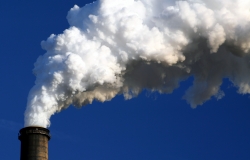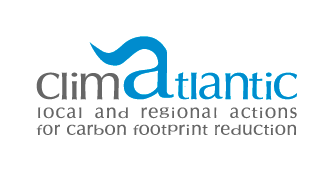NEWS & EVENTS : ENERGY

Emissions trading: annual compliance round-up shows declining emissions in 2011
05.24.2012
Emissions of greenhouse gases from installations participating in the EU Emissions Trading System (EU ETS) decreased by more than 2% last year, according to the information provided by Member State registries.
climatlantic //
Climate Action Commissioner Connie Hedegaard said: ''ETS Emissions decreased by more than 2% in 2011 despite an expanding economy recovery. This good result shows that the ETS is delivering cost-effective emissions reductions. It also emphasizes why the ETS remains the engine to drive low-carbon growth in Europe. However, there is still a growing buffer of unused allowances. This is why the Commission, as announced last month, is now reviewing the time profile of phase 3 auctions with a view to reducing the number of allowances for auction in the early years of phase 3''.
2011 emissions data
The EU ETS covers more than 12,000 power plants and manufacturing installations in the 27 EU member states, Norway and Liechtenstein and, from this year, emissions from airlines flying to and from airports in these countries. Despite an expanding European economy, verified emissions of greenhouse gases from these installations1 dropped to 1.889 billion tonnes of CO2-equivalent last year, more than 2% below the 2010 level.
High level of compliance from installations
Companies' level of compliance with the EU ETS rules was again high. Less than 1% of the installations participating did not surrender allowances covering all their 2011 emissions by the deadline of 30 April 2012. These installations are typically small and together account for less than 1% of emissions covered by the EU ETS. Two per cent of installations failed to submit verified emissions for 2011 by the same deadline.
Second year of emissions reporting from aircraft operators with very high level of compliance
As in 2010, almost all commercial airlines with significant operations to or from EU airports have reported their 2011 emissions on time, despite the fact that these emissions do not trigger obligations to surrender allowances this year and are not needed for specific regulatory purposes. More than 1200 emissions reports for 2011 have been submitted to the Member States by airlines. There has been systematic non-reporting of 2011 emissions from flights to or from EU airports by airlines based in China and India. This concerns 10 commercial airlines that are currently operating to or from the EU, representing less than 1% of emission reports and less than 3% of emissions2.
Increased use of international credits, in particular from China and India
Last year's record use of international credits has increased the buffer of unused allowances by some 450 million. This means more than 900 million more allowances have been put into circulation than were surrendered for compliance use over the period 2008-2011.
Since 2008 installations can surrender international emission reduction credits generated through the Kyoto Protocolís flexible mechanisms in order to offset part of their emissions. CERs3 accounted for 5.8 % of all surrenders in 2008-2011. Cumulatively, the EU ETS has been responsible for the use of 456 million CERs, of which 267 million from China and 79 million from India (59% and 17% respectively of the total use). Other CERs originated in South Korea (13%) and Brazil (6%), with a further 20 countries of origin accounting for the remaining 6%.
A total of 100 million ERUs have been used in the EU ETS since 2008. ERUs4 have accounted for 1.2% of all surrenders since 2008. The combined CER and ERU surrenders since 2008 have used up roughly 39% of the approximately 1.4 billion credits that are allowed over the 2008-2012 trading period.
Background
Under the EU ETS, installations are required to submit their verified emissions data for each year to Member State registries. For 2011 this data became publicly available on the Community Independent Transaction Log (CITL) on 2 April 2012. From 15 May onwards the CITL also displays compliance data, with information on whether installations have complied with their obligations to surrender an amount of allowances equal to last year's verified emissions.
The second trading period of the EU ETS began on 1 January 2008 and runs for five years until 31 December 2012. This period coincides with the period during which industrialised countries must meet their Kyoto Protocol emission targets. The EU ETS has been substantially reformed for the third trading period, which will start on 1 January 2013 and run until 2020. The legislation revising the Emissions Trading Directive was adopted as part of the EU climate and energy package on 23 April 2009 (IP/09/628) laying down revised rules for the ETS after 2012 until 2020 and beyond.








